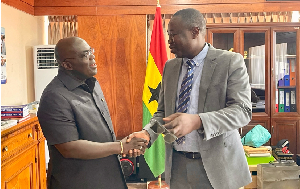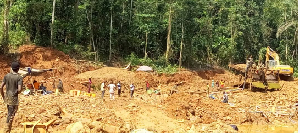Ghana’s poverty rate has declined and currently stands at 23.4%, the Ghana Statistical Service (GSS) has announced in a latest survey.
According to the survey, Ghanaians are not as poor as they used to; nonetheless, about 2.4 million people in Ghana are drowning in extreme poverty while 6 million people are living in poverty.
Speaking at the Launch of the of Ghana Living Standard Survey seven (GLSS7) Poverty profile report held in Accra, last Friday, the Acting Government Statistician, Mr. Baah Wadieh, said poverty has been declining over the past three decades.
He said, the decline though minimal, can be attributed to government’s policies and interventions which have in time past impacted positively to poverty reduction.
Receiving funding from the World Bank, UK-DFID, the Dutch Government and the Ministry of Finance, the GLSS is a nationally representative household survey implemented in the country to monitor welfare systems, as well as the progress of socio- economic policies.
Poverty Lines
Highlighting Ghana’s poverty lines as well as some statistical measures used in the survey, Mr. Anthony Krakah, an official of the GSS said for individuals living in poverty, after putting expenditure together, they could not spend GHC 4.82 per day.
“If you put all your expenditure together and you cannot spend GHC 2.69% per day, you are deemed to be extremely poor. If you are not able to acquire food that will provide you 2900 calories per adult equivalence per day, then you are extremely poor,” Mr. Krakah explained.
Ecological Measurements
Examining poverty by the rural-urban dichotomy, the survey reestablished that poverty rate continues to be high the rural areas.
While the poverty rate in the Urban-coastal areas stood at 8%, the poverty rate in the rural coastal areas was towering at 30%.
Poverty, however is more pronounced in the rural savannah areas at 68%—the highest recorded.
Regional measurements
Considering the 10 regions in the country, the Greater Accra, Western, Central, Ashanti and Brong Ahafo has clocked continuous decline in the poverty rate from 2012 to 2017.
The Volta Region sadly recorded an increase in poverty from 34% in 2012 to 37% in 2017.
The three northern regions however continuous to experience an increase in poverty rate with Upper West recording the highest at 71%
The Country Director for DFID Ghana, Mr Philip Smith, said the report was timely in the launch of Ghana’s Baseline Report on the Sustainable Development Goals, as government drafts a Charter setting out the plan for “Ghana Beyond Aid”.
He said data plays a critical role in informing policy making, and that good data allows effective decisions to be made, where to target resources and to understand which policies are most effective.
Mr Smith revealed that over the last two decades, the UK has invested over £2 billion of development aid in Ghana, working with the government and other development partners, to contribute to the country’s impressive development gains.
General News of Monday, 10 September 2018
Source: thepublisheronline.com













